The other day while taking a break from work I decided to take some photos of the insects in my backyard. There was actually quite a large diversity of insects: bees, wasps, different flies, butterflies of multiple species, beetles, etc. Here are just the wasps and bees that I managed to record.
The order of Hymenoptera are one of my favorite order of insect consisting of wasps, bees, sawflies, and ants. I didn't photograph any ants but there were surely Carpenter Ants around.
To start the list we have the wasps with a little description of each:
Before walking outside I found this wasp on the window. I'm not sure what species or even what family it belongs to. I suspect it is a member of the ichneumonid wasps.

These are parasitic wasps which have a mind-boggingly diversity. Which makes them notoriously difficult to ID. BugGuide gives an idea of its speciation with this quote:
~5,000 described spp. in almost 500 genera in the Nearctic Region, possibly 3,000 more undescribed(2); arguably, the largest animal family, with the estimated 60,000 species worldwide (up to 100,000, according to some estimates(3)).
Below, a spider wasp made an appearance on the wood pile in the back. Another tough ID and a lousy photo doesn't help. You can frequently find them running along the ground and leaf cover searching for prey (spiders) to paralyze and drag to their burrow to lay eggs on.

There are many introduced species in my area. Here is a European Tube Wasp (Ancistrocerus gazella). These are less common in my experience and I only saw one twice before so I was excited to be able to record another one here.

Here is a German Yellowjacket (Vespula germanica), another non-native species. Related to our native yellowjacket.

European paper wasps (Polistes dominula) are a common sight around the New York area as well.
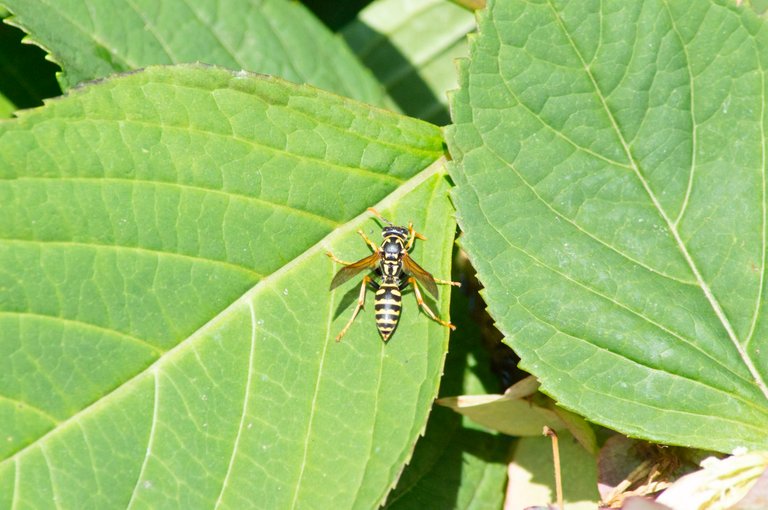
This Mud-dauber (Sceliphron caementarium) is a common native species that I see around this time of year.
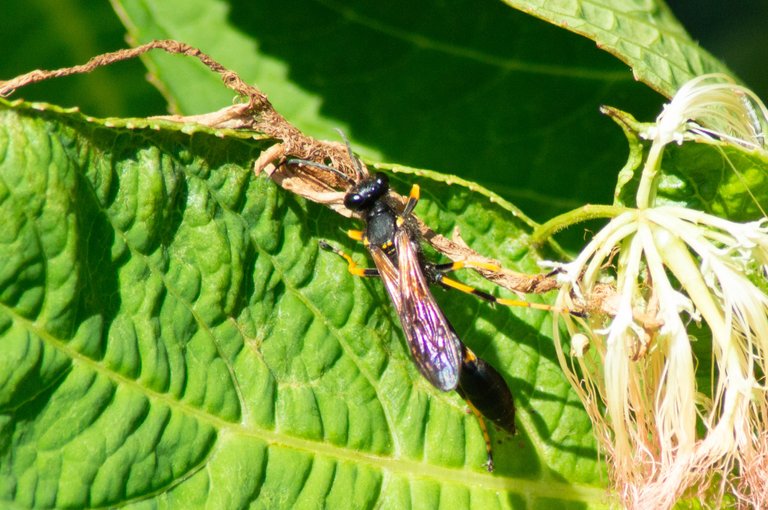
I was able to grab shots of this tiny 1-2mm wasp with my phone. I think it belongs to the Cenocoeliinae subfamily of braconid parasitic wasps. Those are small raindrops on the surface for scale. These were taken the next day after some rain but I added it here for completeness.
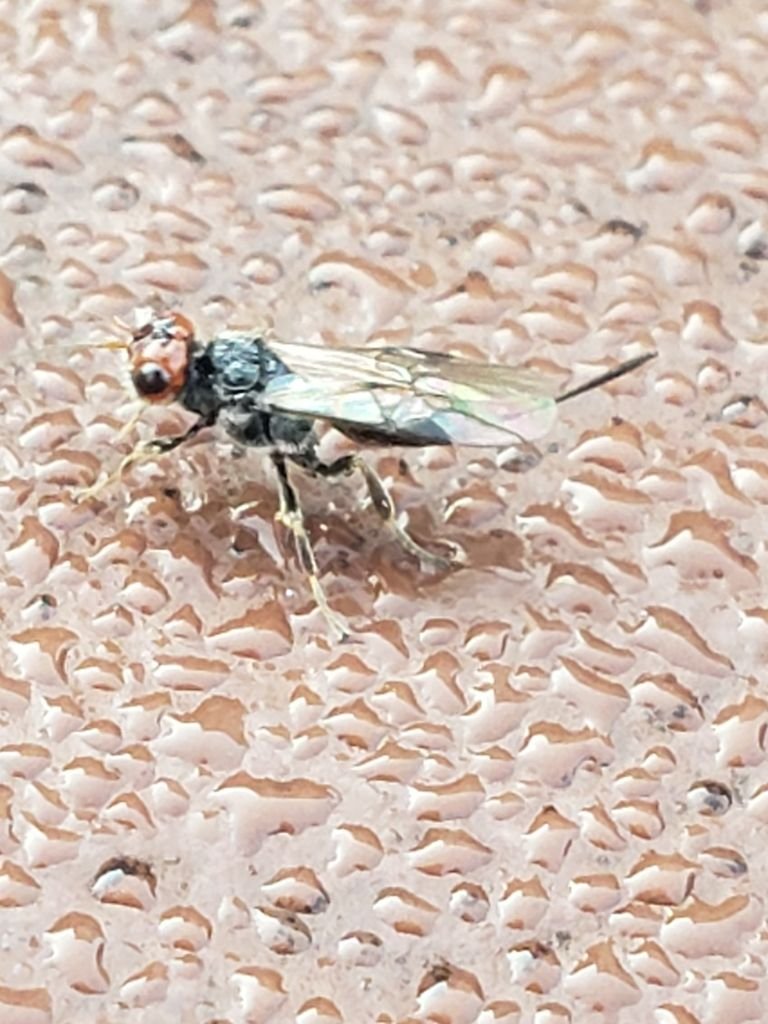
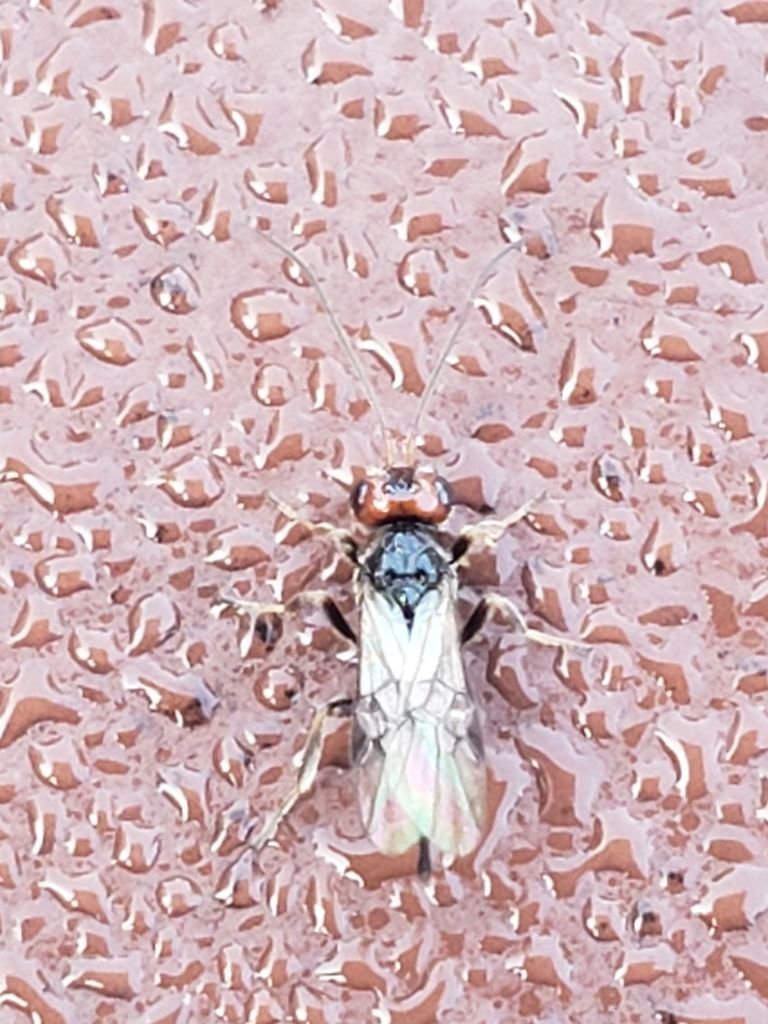
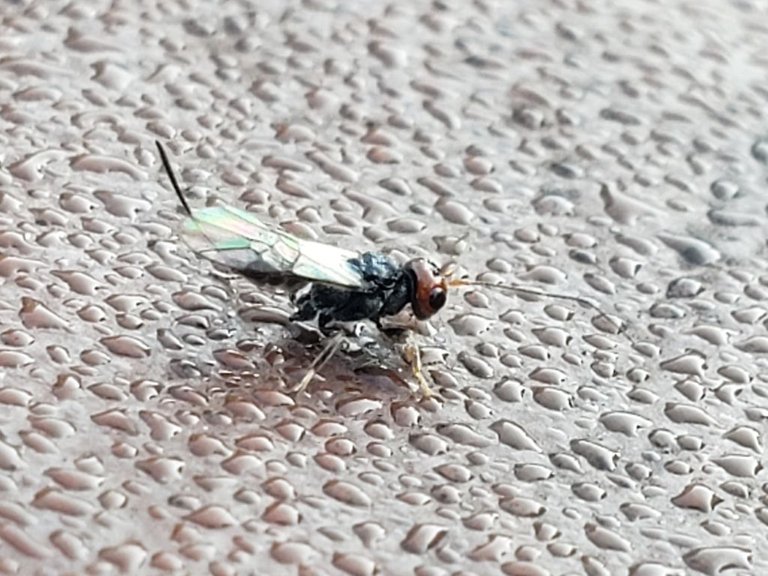
Here is a Furrow Bee (genus Halictus). They are small eusocial bees that are somewhat common but often overlooked because of their size. They nest in the ground in small (2-4 bees) or large colonies (100+ bees). The cells they construct underground are typically lined with a secretion that acts as a waterproof lining.
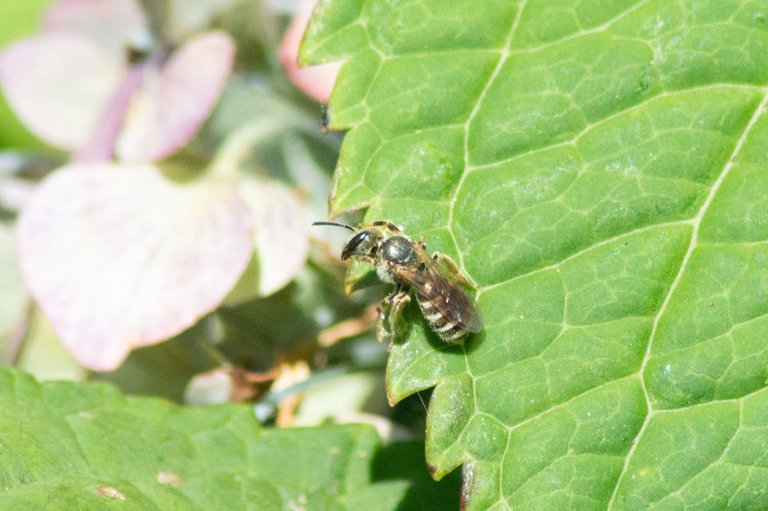
This tiny bee is in the genus Ceratina which are called the small carpenter bees. All species are 8mm or less. They burrow into sticks or stems of woody plants.
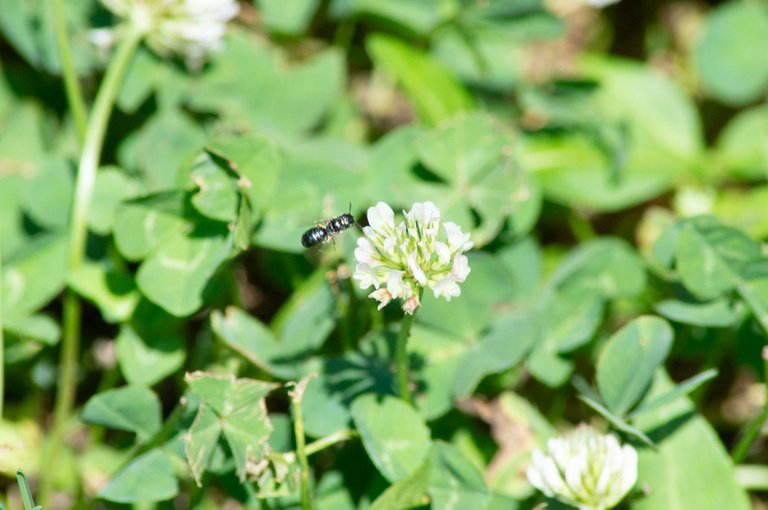
There were many honeybees buzzing along the clover as well. Compare this regular old honey bee on clover to the Ceratina bee above for a comparison of size.
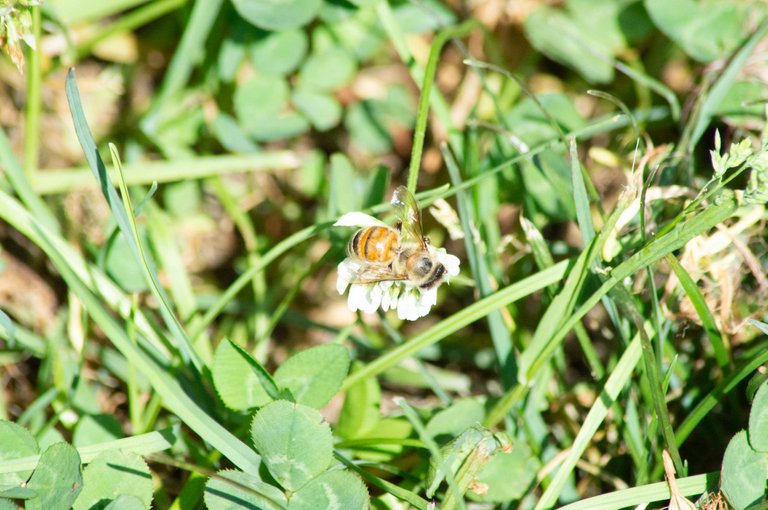
Another very small bee hanging out on the hydrangea was this Hylaeus masked bee. The name comes from the yellow markings on the front of the face forming a mask. One fun fact I just learned about these bees is that they do not have pollen-collecting hairs so they store/transport their pollen and nectar using a "honey stomach" which I imagine is the insect equivalent of a 'crop' in birds. BugGuide.net is an invaluable resource for North American insect and arthropods.
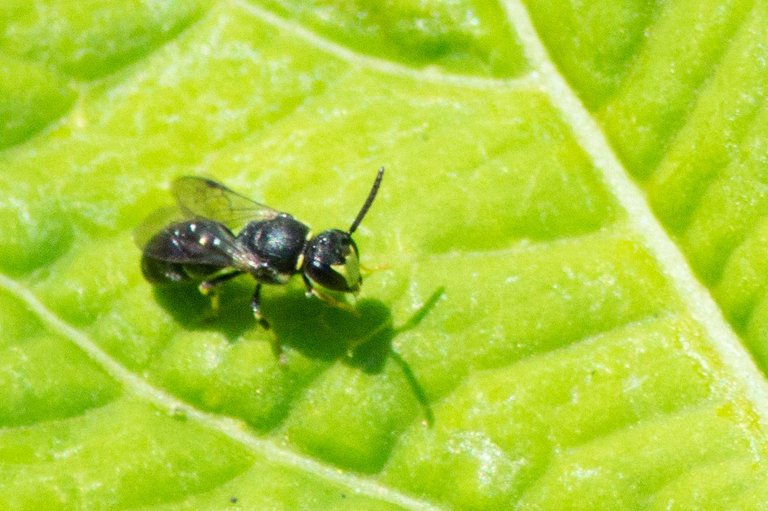
Lastly I was pleased to discover a bunch of Megachile leafcutter bees nesting in our old wood pile. They were patrolling back and forth along the top of the pile and occassionally rushing into the crevices and holes where their nests must be. Later in the day I found a Gasteruption wasp that acts as a parasite on these types of bees.
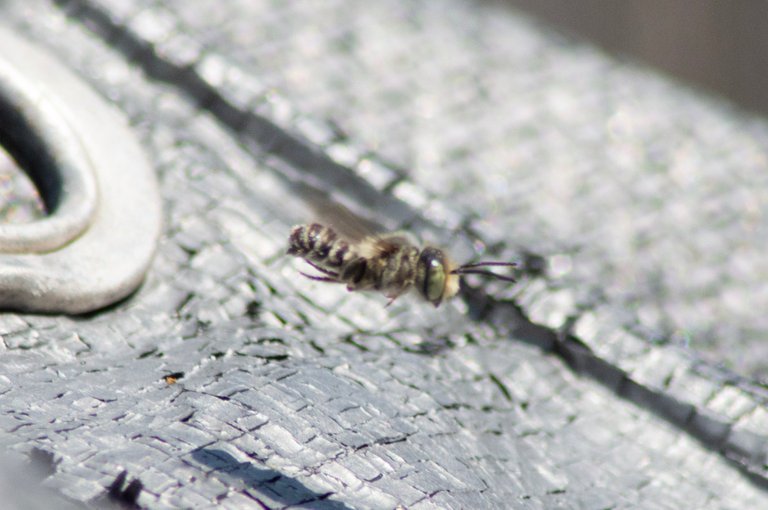
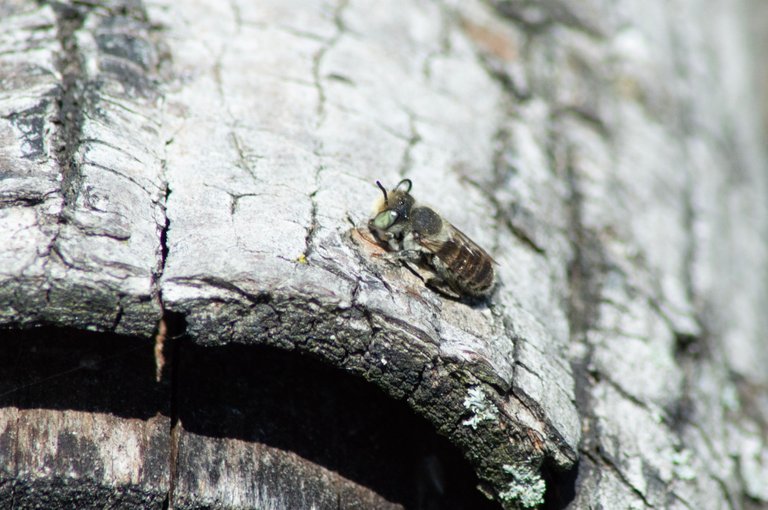
Below is the Gasteruption wasp that parasitizes Megachile eggs/larvae. Note the long ovipositor for poking into the wood-boring bee nests to reach the eggs.
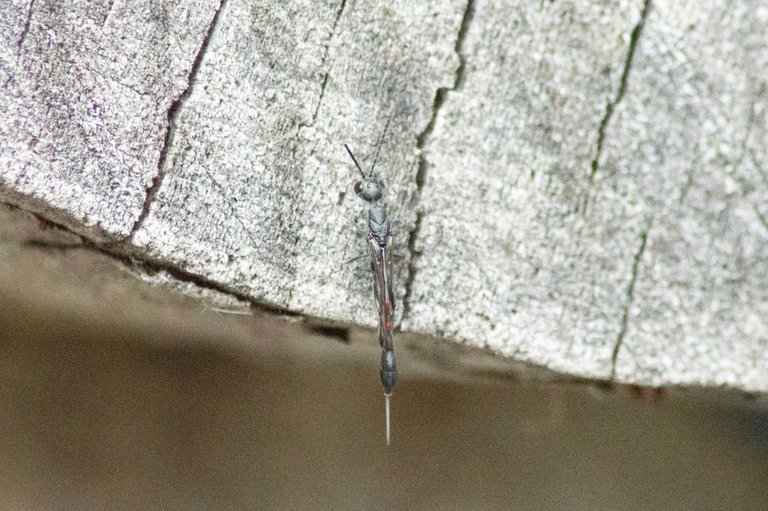
The Final Tally
Ichneumonid sp.
Pompilid sp. (Spider Wasp)
Ancistrocerus gazella (European Tube Wasp)
Vespula germanica (German Yellowjacket)
Polistes dominula (European Paper Wasp)
Sceliphron caementarium (Yellow-legged Mud-dauber Wasp)
Cenocoeliinae sp.
Halictus sp. (Furrow Bees)
Ceratina sp. (Small Carpenter Bees)
Apis mellifera (Honeybee)
Hylaeus sp. (Masked Bees)
Megachile sp. (Leafcutter, Mortar, and Resin Bees)
Gasteruption sp.
Not bad for a lunchbreak :)
















Congratulations @funferall! You have completed the following achievement on the Hive blockchain and have been rewarded with new badge(s) :
Your next target is to reach 400 comments.
You can view your badges on your board and compare yourself to others in the Ranking
If you no longer want to receive notifications, reply to this comment with the word
STOPTo support your work, I also upvoted your post!
Check out the last post from @hivebuzz:
Cool post about this type of insect. You sure found a lot of them.